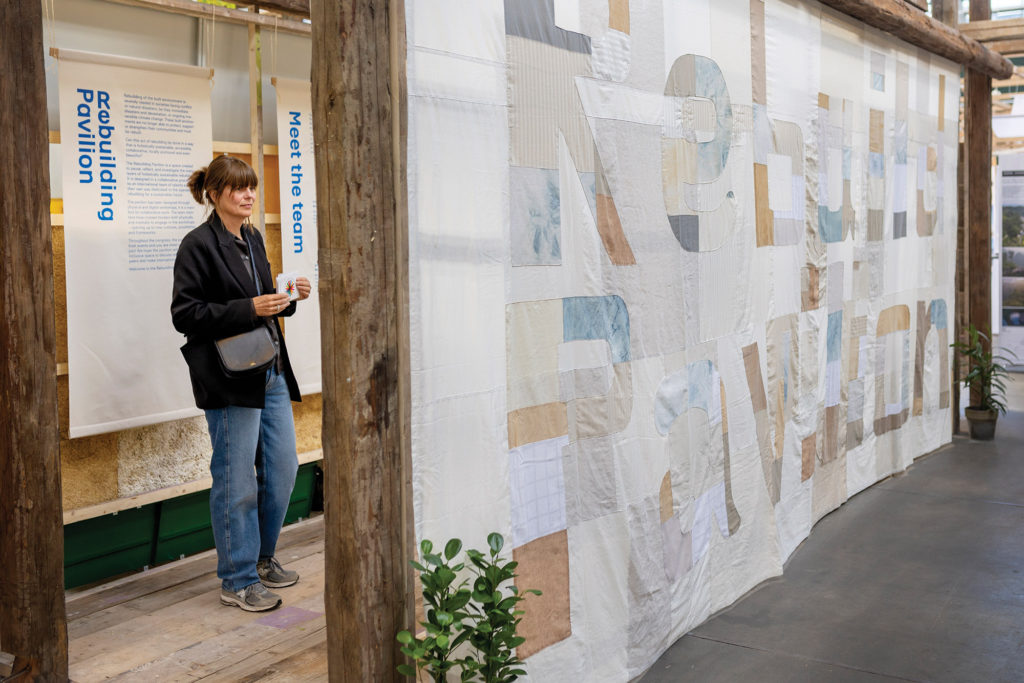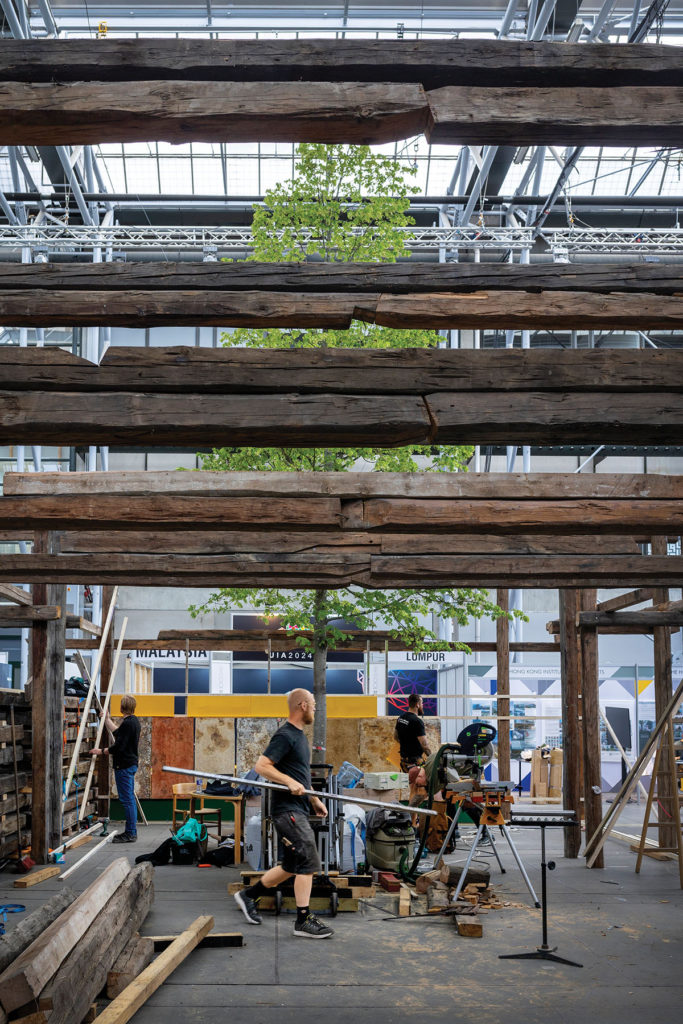4th Quarter 2023
Setting a Rebuilding Agenda for a Broken Battered World
December 7, 2023
Notes from the Rebuilding Pavilion at the World Congress of Architects, Copenhagen
On an unusually warm spring afternoon, I received an unexpected email from Ingeborg Hau, Chief Advisor, Architecture and Sustainable Development Goals, for the International Union of Architects (UIA) World Congress of Architects 2023. The event was to be held in Copenhagen between 2 and 6 July 2023. It was not the usual speaker or panellist invitation email—Hau was on a mission to assemble a team of international architects and practitioners to design, build and programme the Rebuilding Pavilion.

With the theme of the Congress being Leave No One Behind, Hau felt there was an urgent need to highlight rebuilding efforts in architecture, urbanism and beyond, in the wake of recent catastrophic events of climate crisis and war. An international team of architects and artists from Denmark, Nigeria, Bangladesh, Syria, Greenland, India and Ukraine met for the first time in April over the course of a three-day intensive hybrid workshop to conceptualise, design and prepare an implementation plan for the pavilion.
Uncannily, this team of individuals, who had never worked or even heard of each other, shared similar uneasiness with pavilions being statement objects that embody a high aesthetic value but low engagement level. In the age of Instagram and TikTok-driven designs, the team wanted to push the narrative of a pavilion by conceptualising it as a place for pause, almost like a space similar to a home that will act as a refuge in the sea of closed-room presentations and seminars. In terms of materials, there was a unanimous agreement on using waste materials or biomaterials that would either be upcycled or could be reused later. What also emerged in the three days was the decision to work with a courtyard typology for the pavilion, as the courtyard is both culturally and architecturally significant in multiple regions around the world.


Over the course of the next three months, the team met multiple times to discuss and detail out the design and implementation strategy, alongside creating a programme of events and activities to be hosted at the pavilion. The building material finally chosen for the pavilion was a mixture of nature boards and a combination of wooden and steel panels. The nature boards inside the courtyard were created through a bio-based process where mycelium and hemp grow together inside a panel form. The pavilion’s structure was built from reused construction wood from a storage and workshop facility in the historic Carlsberg area in Copenhagen. After the congress was over, all the materials went back to their manufacturers, vendors and keepers to find another use and life somewhere else.
The Rebuilding Pavilion opened to the public on the morning of 3 July at the Bella Centre in Copenhagen, the main venue for the congress. The entrance of the pavilion was a patchwork fabric panel stitched by women from vulnerable areas in Copenhagen out of waste fabric. The focal point of the pavilion was a linden tree in the courtyard, which was replanted after the congress in a garden in Northern Zealand where it will hopefully grow to be at least 30 metres tall. The tree gave a sense of a living space to the courtyard, which hosted informal roundtable sessions, workshops and tea ceremonies.


The furniture, which included benches, chairs and sofa, was all borrowed from different organisations including the Royal Danish Academy—all of which went back to their rightful owners after providing rest to frantic congress attendees running between presentations. Amongst such attendees were legendary architects Jan Gehl and Yasmeen Lari who frequented the pavilion, either to catch a breath or interact with the young generation of architects.
From discussing the urgent needs of rebuilding war-torn countries like Syria and Ukraine, to discussing Nature-based solutions for a climate crisis-equipped world, and the need to do it all with care, collaboration and compassion, the Rebuilding Pavilion was able to hold many conversations around building less and rebuilding more. I was fortunate to have moderated one such conversation on fostering knowledge exchange between the global North and the global South, outside the usual developmental paradigm where the former is looked upon as a giver of aid, expertise, etc., while the latter is seen always in need of resources. The climate crisis—and to some degree the war in Ukraine—has revealed that the world at large is in need of rebuilding, both materially and philosophically.
RELATED: Commentary | Rebuilding Before Building
To push the point across, the pavilion courtyard also exhibited projects showcasing rebuilding efforts around the world. The pavilion, though now dismantled with its materials serving other purposes, is not done yet. It seeks to find different forms in other parts of the world to build consensus on collaborative and compassionate rebuilding that is gentle to the planet while serving the interests of the people in need. It seeks to be a movement where each of us can pause to ask, “Can we rebuild what we have, before starting from scratch?”
Read more stories from FuturArc 4Q 2023: Water!

Don’t miss out on our ongoing competition—submit your entries for FuturArc Prize 2024: Architecture for Life After … now!

To read the complete article, get your hardcopy at our online shop/newsstands/major bookstores; subscribe to FuturArc or download the FuturArc App to read the issues!
Previously Published Happening
Contact us at https://www.futurarc.com/contact-us for older articles.

